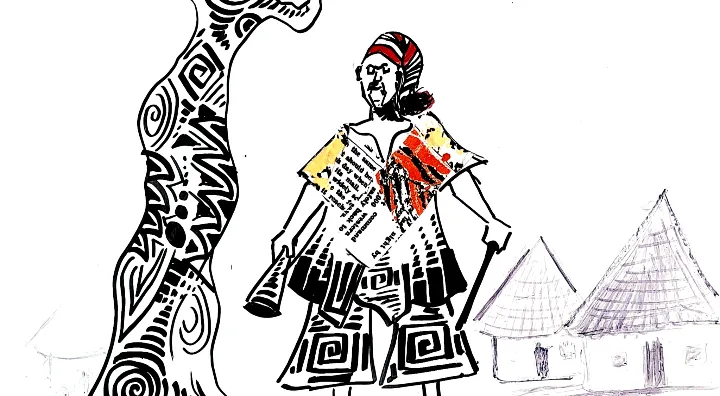OTỊMKPU- The Town Crier
My Root series
Sketch 17
"Otımkpụ" - The Town Crier
The TOWN CRIER: ⏰️ WAKE up oooo, today is SUNDAY 🥳💥🖐✊️✊️✊️👊👊👊👐🙌
I mean stop sleeping, go to church or worship online. Just make sure join the Christians today to worship God o 🙏 🙌 ❤️
😃 😊 🙂 😀 😄...yeah dat message was very important
BACK TO TODAY'S POST
👇👇👇👇👇👇👇👇👇👇👇👇🏻👇🏻👇🏻
"Otımkpụ" is a name the Igbos call TOWN CRIER.
As the name implies, "Otị"- The One who shouts/cries, "mkpụ" - loud. Therefore, "Otımkpụ" means "The one who shouts loud" / "The Town Crier"
Among the Igbo in the Southeast of...
Sketch 17
"Otımkpụ" - The Town Crier
The TOWN CRIER: ⏰️ WAKE up oooo, today is SUNDAY 🥳💥🖐✊️✊️✊️👊👊👊👐🙌
I mean stop sleeping, go to church or worship online. Just make sure join the Christians today to worship God o 🙏 🙌 ❤️
😃 😊 🙂 😀 😄...yeah dat message was very important
BACK TO TODAY'S POST
👇👇👇👇👇👇👇👇👇👇👇👇🏻👇🏻👇🏻
"Otımkpụ" is a name the Igbos call TOWN CRIER.
As the name implies, "Otị"- The One who shouts/cries, "mkpụ" - loud. Therefore, "Otımkpụ" means "The one who shouts loud" / "The Town Crier"
Among the Igbo in the Southeast of...




